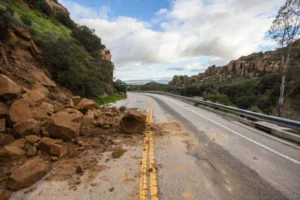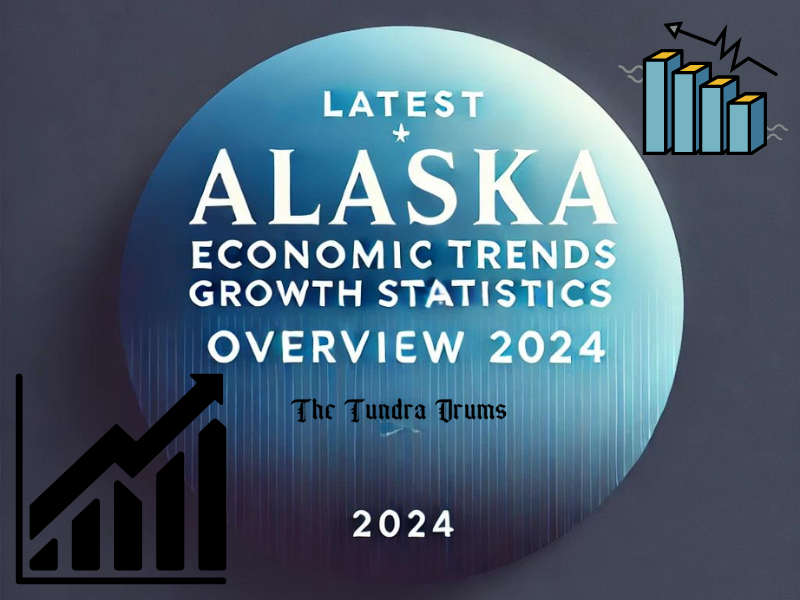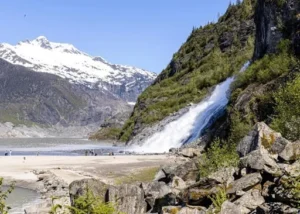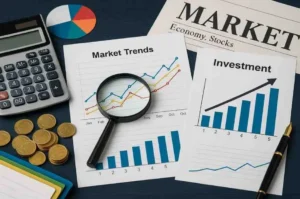Alaska’s economy is a dynamic mix of traditional industries and emerging sectors. In recent years, the state’s economic landscape has seen significant growth, with notable contributions from oil and gas, fishing, tourism, and technology. Understanding these Alaska economic trends is crucial for businesses, policymakers, and residents. This blog explores the latest data on Alaska’s GDP, employment rates, industry performance, and government initiatives, providing a comprehensive overview of the state’s economic health in 2024.
Overview of Alaska’s Economy
Alaska’s economy is primarily driven by natural resources, particularly the oil and gas industry. In 2024, Alaska’s gross state product (GSP) reached $55.0 billion, reflecting a 1.0% growth over the past five years. In 2023, the total Gross Domestic Product (GDP) for all industries in Alaska was $67.34 billion, reflecting steady growth from $65.70 billion in 2022 and $58.65 billion in 2021.
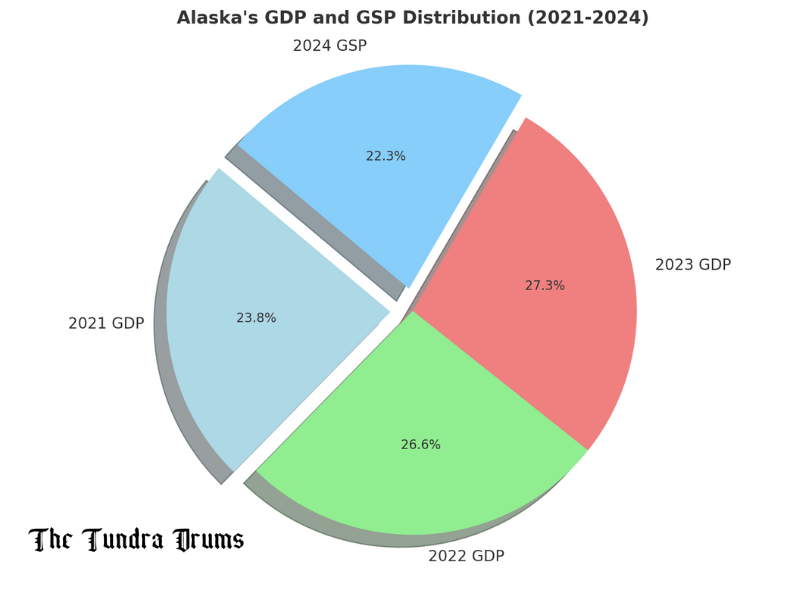
The state and local government contributed $6.72 billion to the GDP in 2023, up from $6.49 billion in 2022. The information sector also grew significantly, reaching $1.60 billion in 2023. GDP growth has slowed to an annualized rate of 3.8% over the five years to 2024, ranking Alaska 43rd out of all 50 states.
The unemployment rate remains relatively high at 4.7% as of early 2024.
- Anchorage’s labor force increased by 370 workers from March 2023 to March 2024, while the unemployment rate rose from 3.0% to 3.8% over the same period.
- Alaska’s February 2024 employment was 2.6% above the previous February, but still 1.5% below February 2020 levels.
- Anchorage is forecast to see job growth in most sectors in 2024, but worker shortages will limit the ability to expand the economy.
Population growth has been stable, with the state having approximately 733,103 residents in 2024. The inflation rate dropped to 1.5% in 2023, helping to stabilize the cost of living.
Current Alaska Economic Data for 2024
In 2024, the Alaska economic forecast reveals a landscape of both growth and challenges. Key indicators such as GDP, employment rates, and sector-specific trends highlight the state’s economic status and progress. This year, Alaska has experienced a slight population increase, stable inflation rates, and a balanced recovery across various industries. These data points provide a comprehensive snapshot of the current economic conditions and future outlook, offering valuable insights into the state’s economic trajectory.
Economic Outlook and Performance
- Economic Outlook Rank: Alaska ranks 25th out of 50 states, indicating a moderate forecast based on various state policy variables.
- Economic Performance Rank: The state ranks 49th, reflecting a backward-looking measure based on cumulative GDP growth and employment trends.
Economic Indicators
- Cumulative GDP Growth (2012-2022): Alaska has experienced a cumulative GDP growth of 9.15%, ranking it 50th among states, indicating very slow economic growth compared to others.
- Non-Farm Employment Growth (2012-2022): The state has seen a decline in non-farm employment, with a growth rate of -4.14%, ranking 49th.
- Unemployment Rate: As of early 2024, the unemployment rate stands at 4.7%, which is relatively high compared to other states.
Population and Migration Trends
- Population Growth: After several years of decline, Alaska’s population has seen slight growth recently, with a net migration loss of -75,806 from 2013 to 2022, ranking 35th in this category.
- Net Migration: The state has faced net migration losses for the 11th consecutive year, although the losses are decreasing compared to the late 2010s.
Inflation and Cost of Living
- Consumer Price Index: Urban Alaska’s consumer price index rose by 1.5% last year, following a 4.9% increase in 2021, reflecting a relatively stable inflation rate in recent times.
Impact of Alaska Department of Commerce Community and Economic Development
The Alaska Department of Commerce, Community, and Economic Development (DCCED) plays a vital role in enhancing the state’s economy through various initiatives and programs. Here are some key impacts:
1. Economic Development and Marketing
- Marketing and Economic Development Initiative: The Governor’s FY24 budget includes funding to market Alaska and promote its economic and social opportunities. DCCED is developing a marketing plan and strategies to effectively market the state.
2. Infrastructure and Digital Equity
- Alaska Broadband Office (ABO): The ABO manages the state’s response to the Digital Equity Act and the Broadband Equity, Access, and Deployment (BEAD) Program. These programs aim to bridge the digital divide by providing grants to build broadband infrastructure, increasing capacity for unserved and underserved Alaskans.
3. Support for Small Businesses
- International Trade Assistance Grant (ITAG): Funded by the Small Business Administration, this program assists Alaska-based small businesses with exporting activities, promoting international trade and economic diversification.
4. Regulatory Changes and Consumer Protection
- 80th Percentile Rule Repeal: Starting January 1, 2024, the government repealed the 80th percentile rule, which required insurance companies to pay out-of-network claims at a minimum of the 80th percentile of charges for the geographic area. This change aims to balance consumer protection with market flexibility.
5. Workforce and Community Development
- Serve Alaska and AmeriCorps Programs: These programs focus on volunteerism and community service, contributing to workforce development and community resilience. Notable events include the Dr. Martin Luther King Jr. National Day of Service and various volunteer recognition events.
6. Recent Achievements
- Recognition for Banking and Securities Division: The Division of Banking and Securities was voted one of Alaska’s best places to work in 2023, highlighting the department’s efforts to create a supportive and productive work environment.
Alaska Economic Resources: Industry-Specific Growth Trends
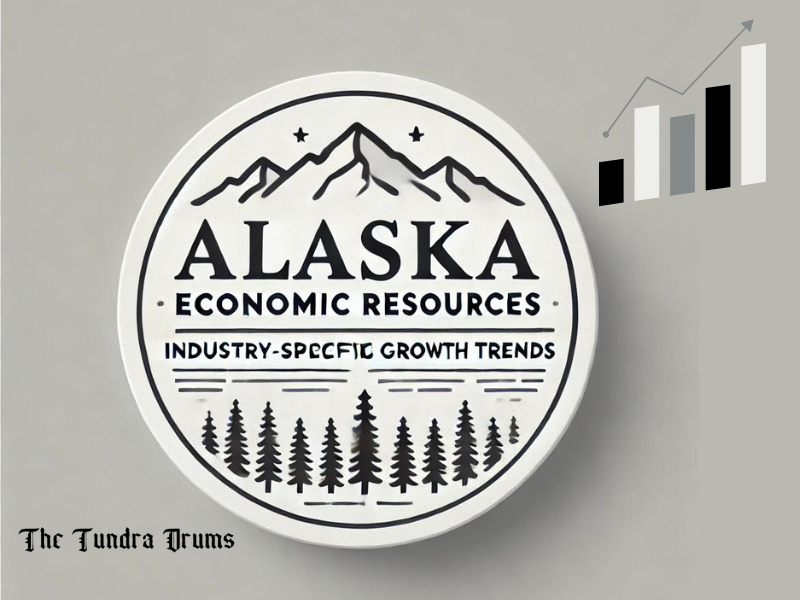
In 2024, Alaska’s economy is experiencing notable growth across several key industries, reflecting the state’s gradual recovery from the pandemic and its adaptation to new economic realities. Here’s a breakdown of the significant industry-specific trends shaping Alaska’s economic landscape:
Overall Economic Growth:
Alaska is projected to see a 1.7% increase in job growth this year, marking a notable recovery from the previous downturns. This growth is fueled by heightened activities in sectors like oil and gas, construction, and infrastructure, largely supported by federal funding. The state is focusing on revitalizing its economy by leveraging its natural resources and infrastructure improvements.
Oil and Gas Industry:
The oil and gas sector remains a cornerstone of Alaska’s economy. In 2024, projects such as Willow and Pikka are expected to generate around 400 new jobs. While these projects won’t produce oil immediately, they are pivotal for long-term economic growth. Alaska’s vast untapped reserves, estimated at 40 to 50 billion barrels, highlight the state’s potential to enhance its economic standing through strategic resource management.
Construction Sector:
The construction industry is set to add 500 jobs, driven by an influx of federal infrastructure investments. These projects, which include road and bridge repairs as well as broadband expansion, are not only creating immediate job opportunities but also laying the foundation for sustained economic growth. The federal funding is anticipated to bring billions into the state, significantly enhancing Alaska’s infrastructure.
Mining Industry:
The mining sector, including both mineral extraction and oil and gas, continues to be a vital part of Alaska’s economy. A new gold mine in the interior will start production in 2024. Providing additional employment opportunities and boosting the state’s economic recovery. This sector, known for its high-paying jobs, plays a critical role in supporting the livelihoods of many Alaskans, especially in rural areas.
Tourism Sector:
Tourism is showing strong signs of recovery, with projections indicating that cruise visitor numbers may reach or even exceed 1.65 million, matching pre-pandemic records. This resurgence is driven by strong domestic travel demand, as more Americans choose to explore the natural beauty of Alaska. The tourism industry’s rebound is crucial for the state’s economy, as it supports numerous jobs in hospitality and related services.
Demographic and Social Factors
Alaska’s demographic and social characteristics provide a unique perspective on the state’s economic and cultural landscape. Here’s an overview of key data and insights:
Population Statistics
| Metric | Value |
| Total Population (Jan 2024) | 736,812 |
| Total Population (Jan 2023) | 733,406 |
| Population Growth | 3,406 (increase) |
| Population Density | Least densely populated state in the U.S |
Alaska remains the least densely populated state, with a vast geographical area that includes many rural communities. The population has shown a slight increase, indicating a recovery from previous declines.
Age and Gender
| Metric | Value |
| Median Age | 35.3 years |
| Gender Distribution | 51% female, 49% male |
Alaska has a relatively young population, with a median age of 35.3 years, which is younger than the national average. The gender distribution is fairly balanced.
Ethnic Composition
According to the 2020 U.S. Census, the racial composition of Alaska is as follows:
| Racial Group | Percentage |
| White (Non-Hispanic) | 58.8% |
| American Indian and Alaska Native | 13.9% |
| Asian | 6.7% |
| Black or African American | 3.7% |
| Two or More Races | 8.85% |
| Foreign-Born Residents | 7.88% (approx. 57,900 individuals) |
Alaska is home to a diverse population, with significant representation from American Indian and Alaska Native communities. A notable portion of the population is foreign-born, contributing to the state’s cultural richness.
Economic Factors
| Metric | Value |
| Median Household Income | $86,370 |
| Homeownership Rate | 66.3% |
| Median Property Value | $318,000 |
The state’s median household income has seen a 7.58% increase, reflecting a positive economic trend. The homeownership rate and median property value indicate a stable housing market.
Language and Education
| Metric | Value |
| Average Commute Time | 19.3 minutes |
| Average Cars per Household | 2 |
Most Alaskans commute alone to work, with an average commute time of 19.3 minutes. Households typically own two cars, reflecting the state’s reliance on personal vehicles, especially in remote areas.
These demographic and social factors underscore Alaska’s unique position within the United States. The state’s diverse population, economic conditions, and social dynamics, along with the varying levels of economic activity in Alaska, play a crucial role in shaping its future development and policy considerations. Understanding these elements is essential for crafting policies that address the specific needs and opportunities within the state.
Key Growth Indicators of Alaska Economy
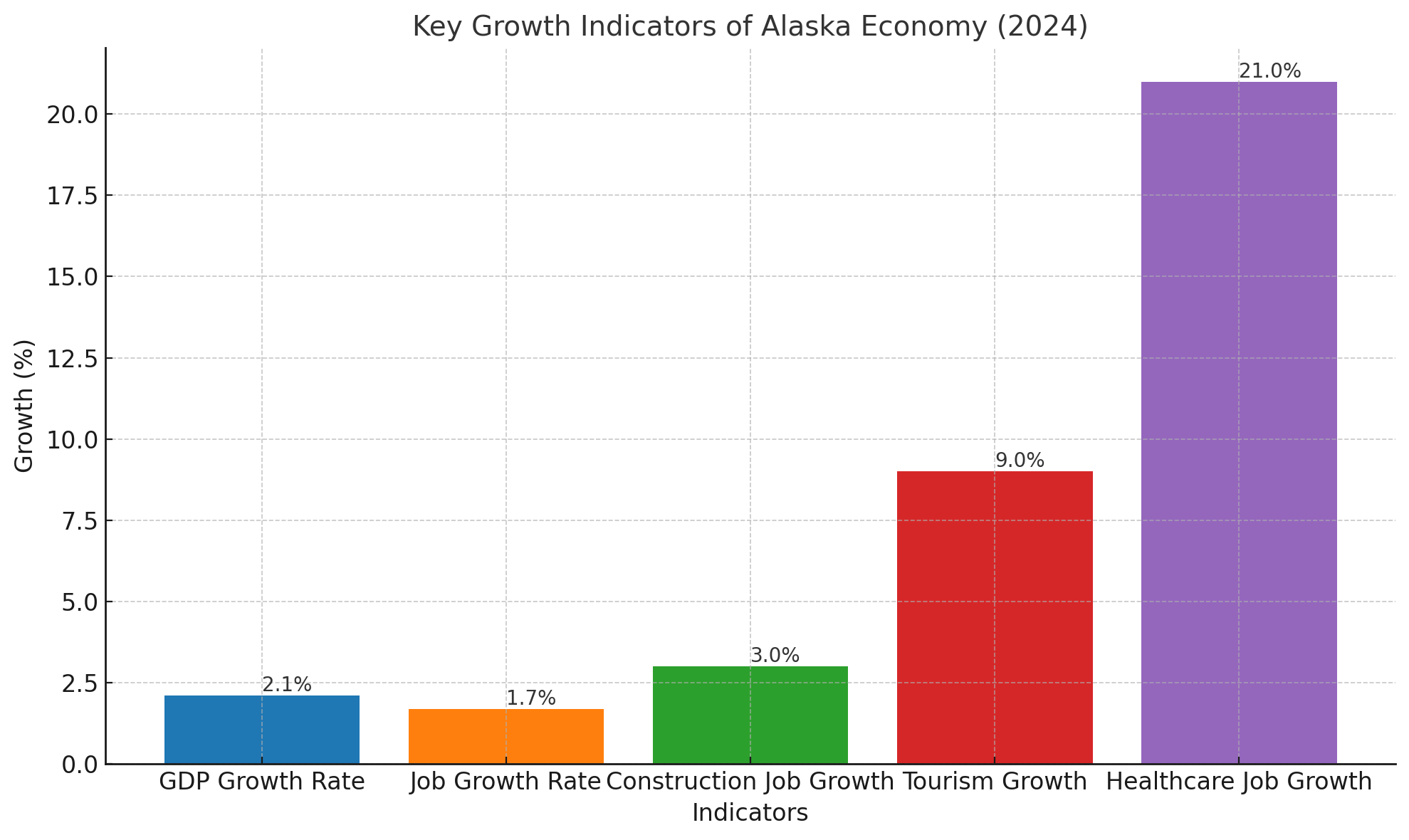
The chart above illustrates the key growth indicators for Alaska’s economy forecast in 2024. It shows significant increases across various sectors, with healthcare experiencing the highest growth at 21%. The tourism sector is also booming with a 9% increase, while construction sees a moderate rise at 3%. Overall, Alaska’s GDP growth rate stands at 2.1%, and the job growth rate is at 1.7%, reflecting a positive economic outlook for the state.
Government Policies and Economic Initiatives
Recent government policies and economic initiatives in Alaska, as highlighted in the Alaska Economic Report, demonstrate a strong commitment to fostering growth and addressing key challenges. This report provides a comprehensive overview of the state’s strategies to stimulate economic development, enhance infrastructure, and support vital industries. Here’s an overview based on the latest information:
Economic Growth Initiatives
- Infrastructure Investments: Significant federal funding, including over $6 billion from the federal infrastructure bill and the Inflation Reduction Act, will be directed to Alaska over the next decade. This investment will support a wide range of projects. Such as roads, bridges, ferries, and broadband expansion, setting the stage for future economic growth.
Sector-Specific Growth
- Construction: The construction sector is projected to add about 200 jobs, reflecting a 7.7% increase in 2024, driven by key projects such as the Johnson River bridge replacement and other infrastructure upgrades.
- Healthcare: Driven by an aging population and increased demand, the healthcare sector is projected to add 100 new jobs (a 2.3% increase).
- Mining: The opening of the Manh Choh Mine is anticipated to support approximately 700 jobs, including 500 in mining and 200 in transportation.
Legislative Priorities
- Food Security Initiatives: The Alaska Food Policy Council is focusing on improving food accessibility and security. This includes maintaining $4.5 million in the budget for food bank purchases and supporting legislation for free school meals for all students. Along with improvements to the Supplemental Nutrition Assistance Program (SNAP).
- Agriculture Development: Efforts are underway to establish a state Department of Agriculture and fund agricultural research programs. Aiming to boost local food production and sustainability.
Budget Highlights
- FY24 State Budget: Governor Mike Dunleavy signed the FY24 budget, which includes significant investments in several key areas:
- Public Safety: An increase of $26 million for public safety measures.
- Public Education: An additional $65 million allocated for K-12 education and related programs.
- Economic Development: $5 million for statewide marketing and economic initiatives, and $2.5 million for tourism marketing.
Challenges Ahead
- Inflation and Disposable Income: While inflation has slowed, high prices continue to impact purchasing power. The Alaska Permanent Fund Dividend was smaller in 2023, resulting in reduced disposable income for many households.
- Labor Shortages: The state continues to face significant labor shortages, with about twice as many job openings as unemployed individuals. This imbalance may pose challenges to economic recovery and growth.
Final Words
Alaska’s economic trends show steady growth in sectors like healthcare, construction, and mining, driven by significant federal investments. However, challenges such as inflation and labor shortages persist, affecting household income and economic recovery. Efforts to improve infrastructure, food security, and public safety are crucial for supporting Alaska’s long-term economic health.


